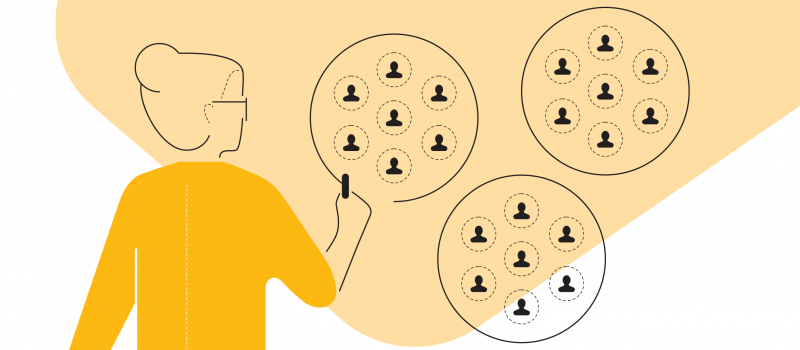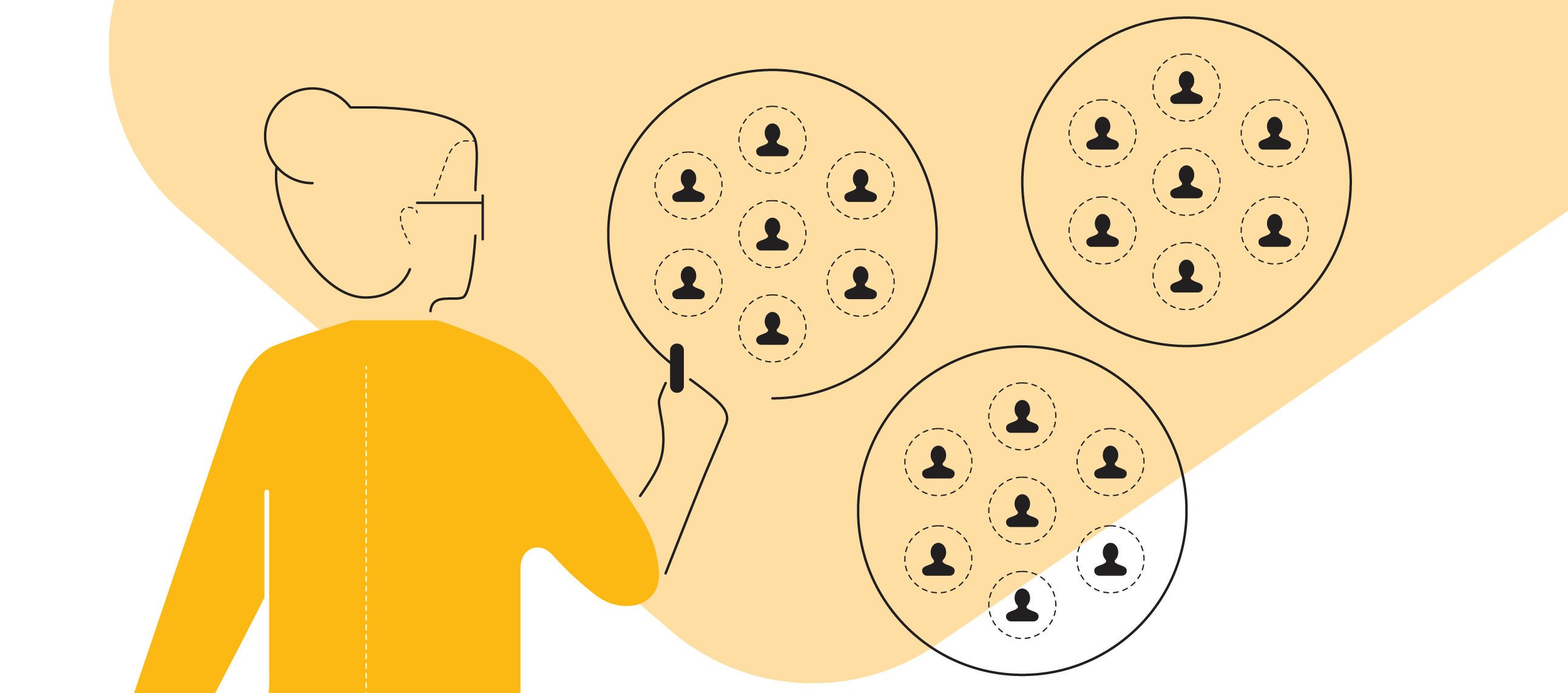Customer segmentation is a vital tool guiding businesses on the path to success. Through a well-defined segmentation strategy, businesses gain the power of precision. They can tailor their products, marketing efforts, and customer experiences to specific niches, delivering a personalized experience for their customer base.
Picture a bakery with a vast menu, offering everything from gluten-free cupcakes to artisanal bread. Without segmentation, they’re casting a wide net and hoping for the best. However, once they segment their customer base, they discover a dedicated group of gluten-intolerant cupcake enthusiasts and artisanal bread connoisseurs. Armed with this knowledge, they can fine-tune their recipes, create tailored promotions, and become a beloved destination for their niche audiences.
In the world of business, companies must utilize the power of segmentation to cater to specific needs, preferences, and desires of their audience. By doing so, they can confidently embark on a successful journey towards their goals.
Don’t miss these 20 customer segmentation statistics for even more reasons why you should give segmenting a try.
General Customer Segmentation Statistics
- According to Notify Visitors, 70% of marketers use market segmentation.
- LinkedIn shares that 80% of companies that use market segmentation report increased sales.
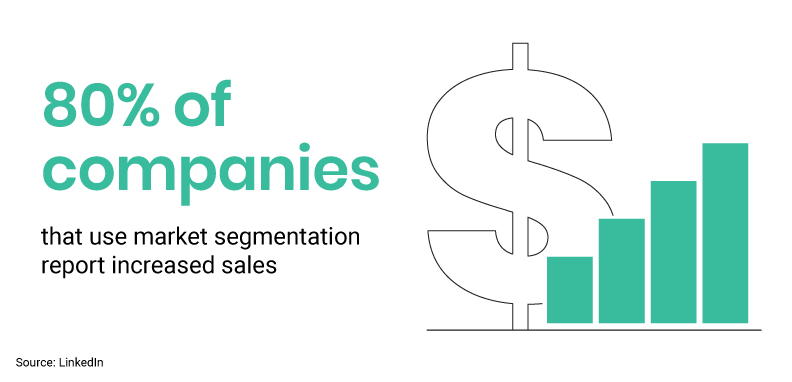
- Investopedia states that on average, companies will use 3.5 different segmentation criteria.
- The four of the most common segmentation criteria are demographics, geographics, psychographics, and behavior according to MailChimp.
Customer Segmentation Statistics: Marketing
- Campaigns that are segmented had 14.31% higher open rates and saw 101% more clicks than non-segmented campaigns according to DemandGen.
- OnlineDasher shares that email segmentation results in an over 30% increase in customer lifetime value.
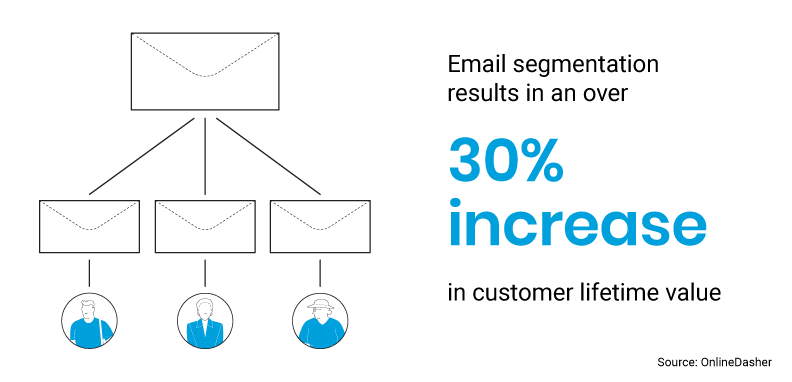
- Nearly 80% of marketing ROI comes from segmented, targeted, and triggered campaigns according to Sales Manago.
- eConsultancy shares that 74% of marketers say targeted personalization can help to increase overall customer engagement.
- 78% of marketers believe that subscriber segmentation is the most effective email marketing strategy according to OnlineDasher.
- Experian has found that personalized emails deliver 6x higher transaction rates.
- Segmented and targeted emails generate nearly 60% of all revenue according to DMA.
- Notify Visitors shares that up to a 50% increase in conversion ratecan be achieved through segmentation.
- Emails with personalized subject lines are 26% more likely to be opened according to Campaign Monitor.
Customer Segmentation Statistics: Company Growth
- According to Online Dasher, a segmented campaign can result in a 760% increase in revenue.
- Business News Daily shares that 10% to 15% more revenue is generated by businesses that tailor their offerings to customer segments than by those that don’t.
- Sales Manage shares that using personas makes 90% of companies more knowledgeable about their customers which can lead to more targeted campaigns and more growth.
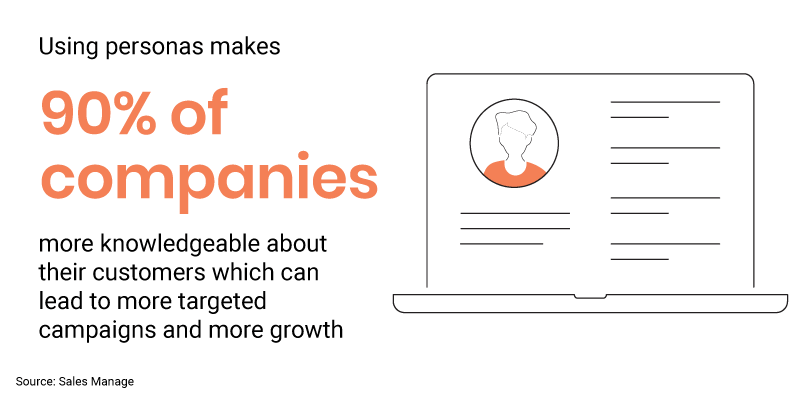
Customer Segmentation Statistics: Customer-Specific
- Notify Visitors states that 88% of users agree they are more likely to respond to an email favorably if it looks like it’s been specifically created for them.
- According to Online Dasher, customers’ challenges and concerns are 60% more likely to be understood by companies that segment their customers.
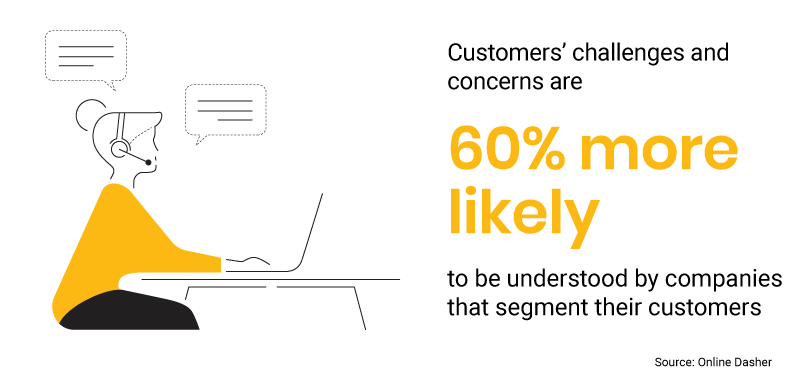
- An article in Forbes states that 49%of participants in a study stated that they purchased something on impulse when it was presented to them with a personalized message.
- Survicate shares that customers’ challenges and concerns are 60% more likely to be understood by companies that segment their customers.
Final Thoughts
Customer segmentation is an effective technique used by businesses to break down their customer base into smaller, more manageable groups. This segmentation considers demographics, behavior, preferences, and various other criteria.
By understanding the distinct needs, desires, and pain points of each group, companies gain valuable insights. Armed with this knowledge, businesses can design products and services tailored to these unique segments, increasing the chances of meeting or even surpassing customer expectations.

